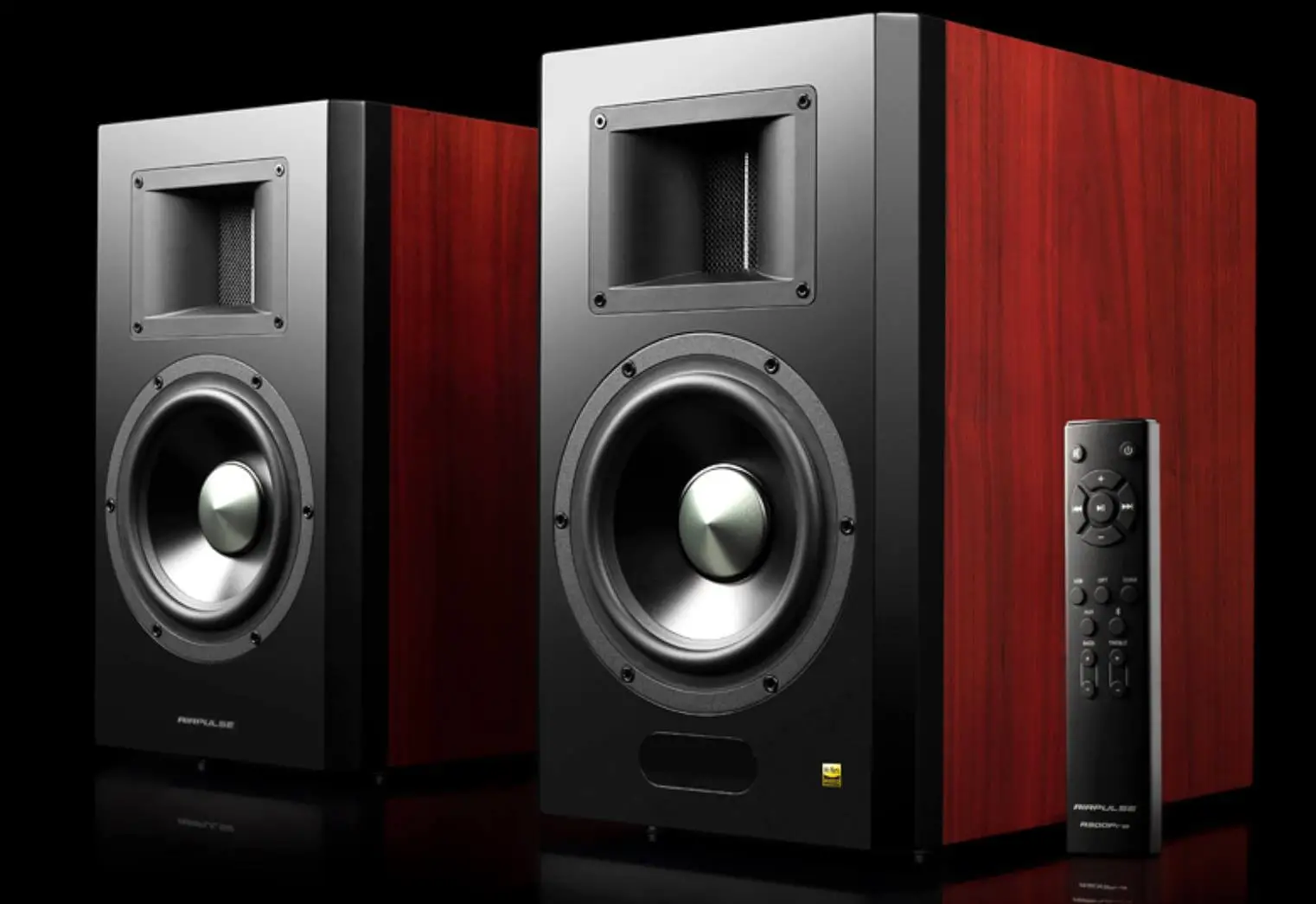Edifier Airpulse A300 Pro review
The enhanced version of Edifier AIRPULSE A300, A300 Pro, has finally arrived. Edifier Airpulse A300 Pro is almost the same as A300 in terms of box size and driver. The most obvious difference is the increase in power, but it also brings new internal structure and functions.
In terms of performance, it dramatically improves the bass woofer’s power while enhancing the 6.5-inch speaker on the original basis, making it more suitable for high-power output. The left and right speakers adopt an asymmetrical design with independent channels of power amplifiers and support separate input of audio sources from the left and right channels. In terms of ease of use, the KleerNet wireless connection between the left and right speakers is added, making the connection more convenient.
Appearance and Function
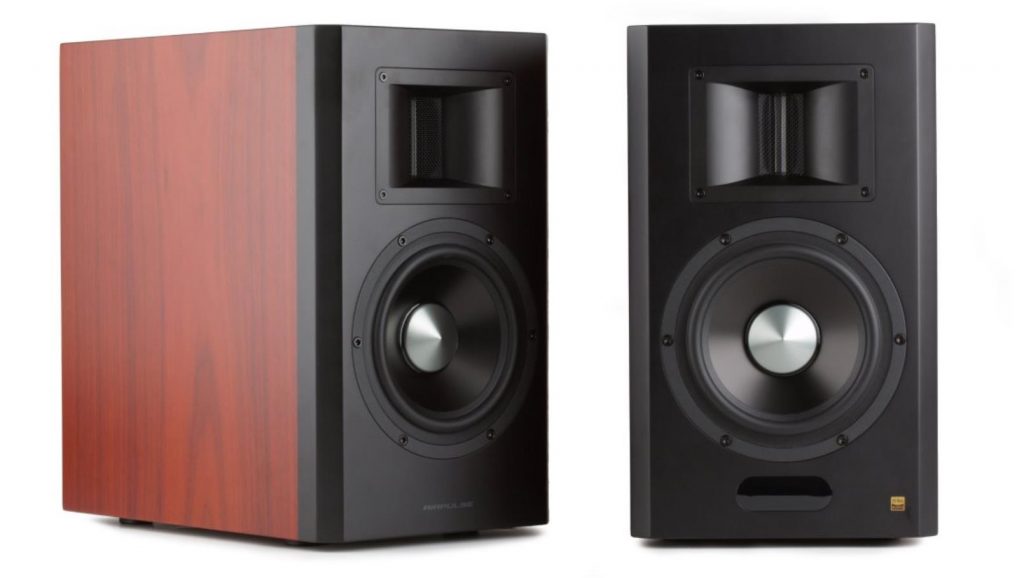
Looking back at AIRPULSE A300, it was the second speaker released by the Edifier Airpulse series. A300 appeared one year after the release of A200. It increased the woofer’s size from A200’s 5.5-inch to 6.5 inches, and the cabinet size was much larger than that of the A200. The digital power amplifier chip is still the Class-D TAS5754M on the A200. Although the 75 watts of this chip is used up, I still feel that the low-frequency control is inadequate. The power of A300 Pro is upgraded to 120 watts, which is very much anticipated.
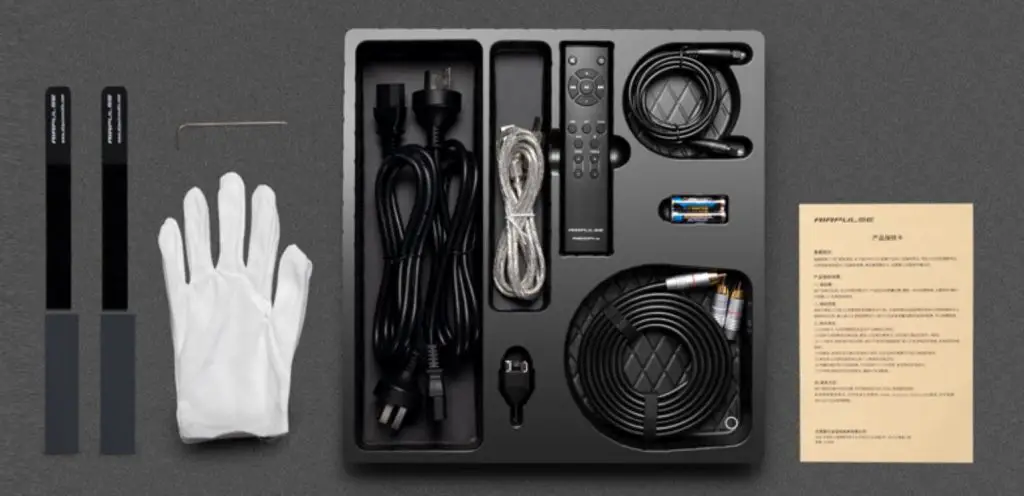
Input Interface
The appearance style of A300Pro still maintains the design style of A300. The depth of the box is slightly more than 10mm, and the measurements are 225x385x350mm [width, height, depth]. The speaker also has a “main and auxiliary” design form by default, and the default main box is on the right. But it supports the input of analog audio signals for the left and right channels separately, so the left channel also has the same power input, frequency division, and amplifier circuit functions as the right main box. The main speaker also features USB input, S/Pdif coaxial or optical input, and Bluetooth input in KleerNet wireless mode.
It can be seen from the back input that the main speakers have one row more input interfaces than the sub speakers. At the top is a pair of RCA analog inputs, and at the bottom are S/Pdif coaxial RCA input, optical input, and USB-B interfaces.
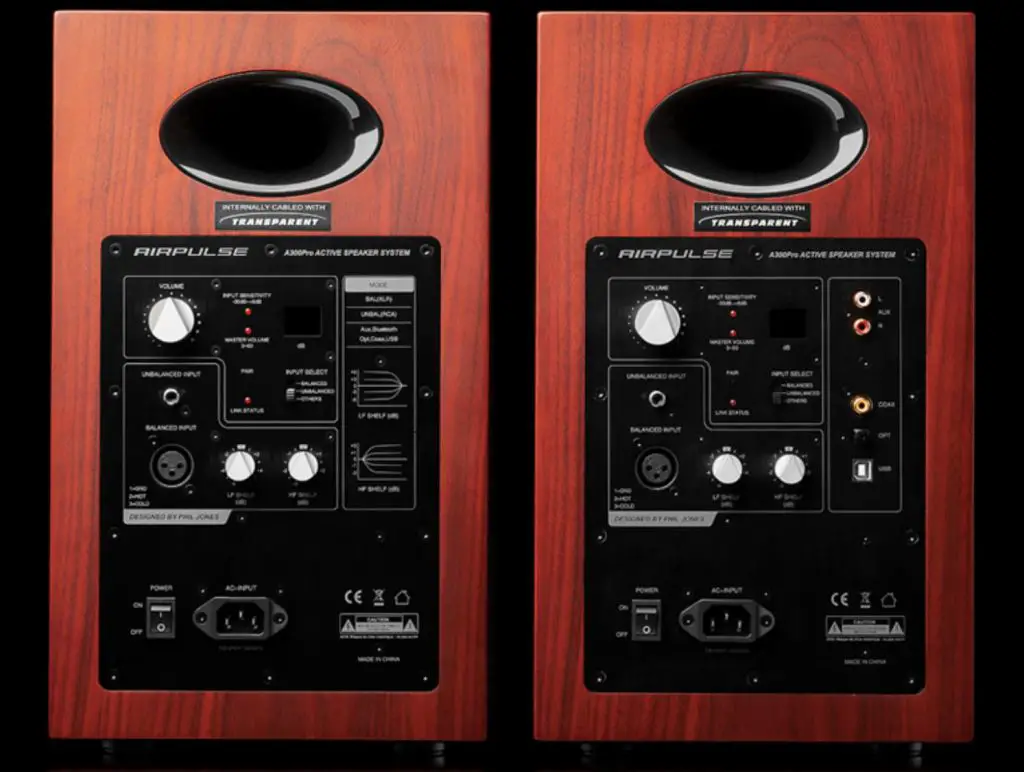
The layout of the other input interfaces of the left and right speakers is the same. The uppermost part on the left is the volume knob, and the lower part is the RCA unbalanced input and XLR balanced input. The LED indicator is used to show the wireless connection status. There is also an OLED screen to display the volume level. When the speaker works in the left and right independent channel mode, that is, when the left and right speakers input signals separately, the speaker adjusts the input sensitivity of -30dB-+6dB. When working in the wireless connection mode, the volume is adjusted from 0 to 60.
The speaker also has a switch for balanced input, unbalanced input, and other inputs. Other inputs such as Bluetooth, USB, S/Pdif, etc. can be switched by remote control or master volume keys. There is a LED screen in front of the speaker to show the corresponding status.
At the bottom are the gain adjustment knobs for high and low frequencies, with ±6dB for low frequencies and ±3dB for treble.
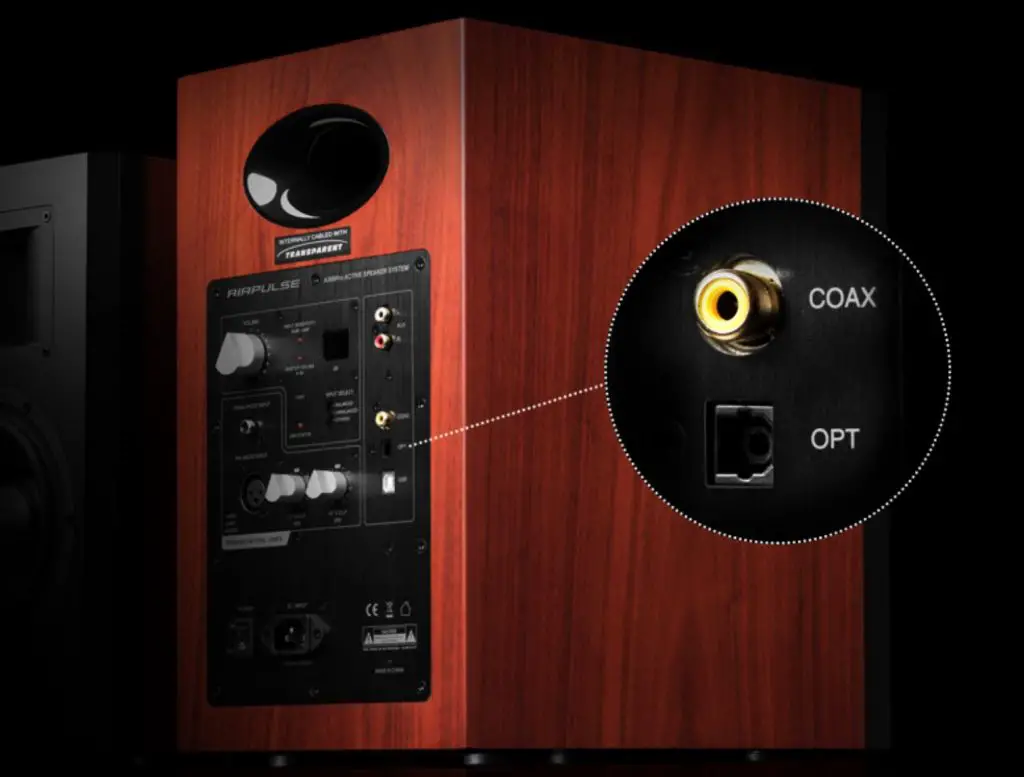
Two Working Modes
Mode One
KleerNet wireless connection is used between the main speaker and the auxiliary speaker. At this time, the auxiliary speaker only needs an external power supply to work with the entire system. The audio source input is completed in the main speaker, which is on the right channel by default. Only in this mode, the remote control can work.
The KleerNet technology first appeared on the Edifier S3000, but the S3000 did not provide the secondary speaker’s analog signal input function. KleerNet’s technology was released by SMSC as early as 2012. The wireless transmission technology of the signal working in the 5G frequency band ensures multi-channel synchronization and lossless signal transmission. In actual use, there is no conflict with home 5G WiFi.

If you need to use S/Pdif digital input, Bluetooth input, USB input, you must use this KleerNet wireless mode. These modes are named “other input” on the back of the speaker, and the remote control does various switching.
Although the signal input part is divided into primary and auxiliary parts in this mode, the left and right parts of the power amplifier are equal and independent, and there is no difference. The wireless transmission is the digital signal after frequency division, not the analog signal of S1000 and A200 in wired transmission mode.
Mode Two
In this mode, the analog signal is divided into two speakers, which are precisely the same. Since the left channel of Edifier Airpulse A300Pro is different from the left channels of S1000, S2000MKII, A100, A200, etc., it has a built-in crossover & amplifier circuit, which is the same as in the right speaker.
Other Functions
A300Pro can support USB input, and the XMOS chip provides UAC2.0 standard access. USB supports PCM input with a sampling rate of up to 192kHz.
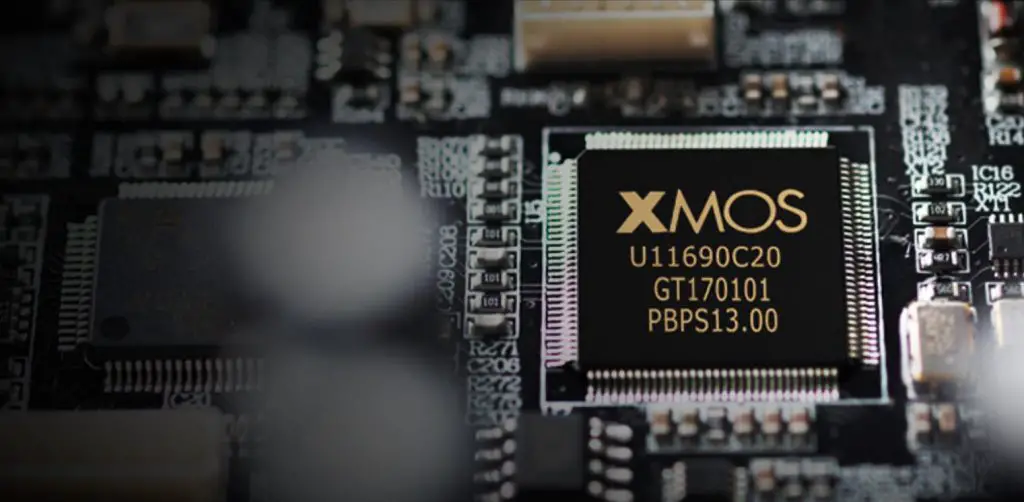
The Bluetooth chip Edifier Airpulse A300Pro uses the Qualcomm QCC3031 Bluetooth solution and supports aptX HD audio codec.
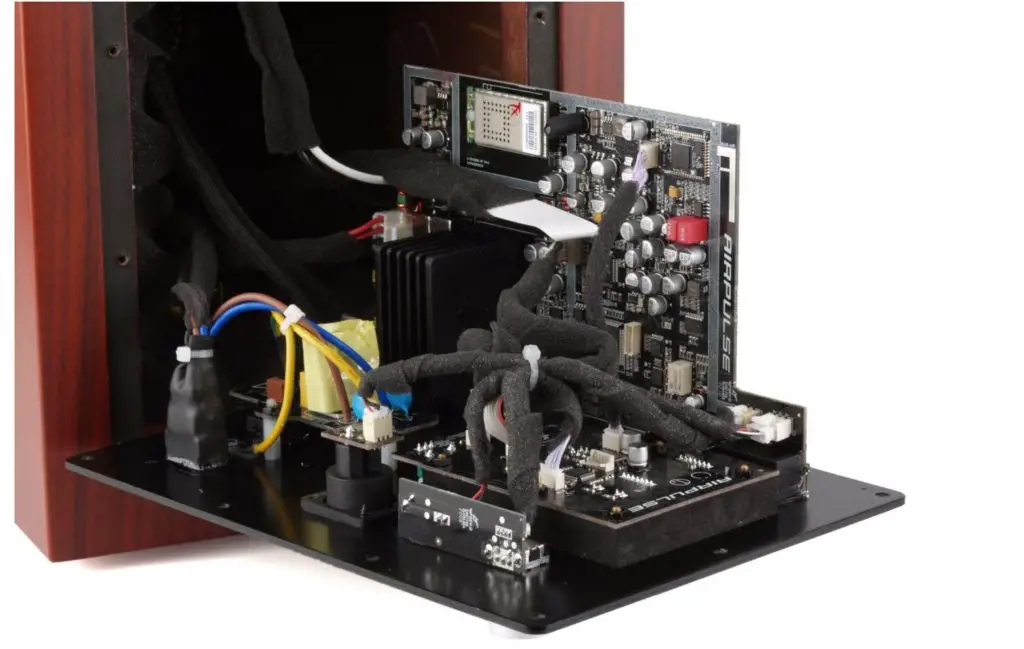
A300Pro has replaced a brand new remote control this time. The remote control uses an all-aluminum alloy shell, which has a good feel and weight. However, the remote control only works in KleerNet wireless connection mode.
Driver Technology
In terms of the mid-bass woofer, although the appearance looks no different from the 6.5 inches above the Edifier Airpulse A300. However, Edifier said the driver had made improvements and adjustments to allow it to withstand higher output power and bring better performance. The overall structure of the speaker has not changed. It is still a cast aluminum frame system with a metal aluminum diaphragm. The use of short voice coil and long-stroke design makes the entire stroke voice coil consistent in the magnetic field. Such a design requires a higher cost in the magnet part, and the overall cost is relatively higher.
Sound Performance
Overall performance
When the left and right independent channel mode is selected, the performance of Airpulse A300Pro is fantastic. The sound density, transient, and level can be felt to improve significantly. In terms of sound style, it is closer to the exquisiteness and elegance of the Edifier Airpulse A100. And it is different from the unrestrained style of the A200 and A300. However, the “exquisiteness” shown by a large-size cabinet and high-power amplifier is far better than the A100. The sound transient detail quality of Airpulse A300Pro has been dramatically improved, no matter the small details and significant dynamics of music, it has achieved unprecedented control.
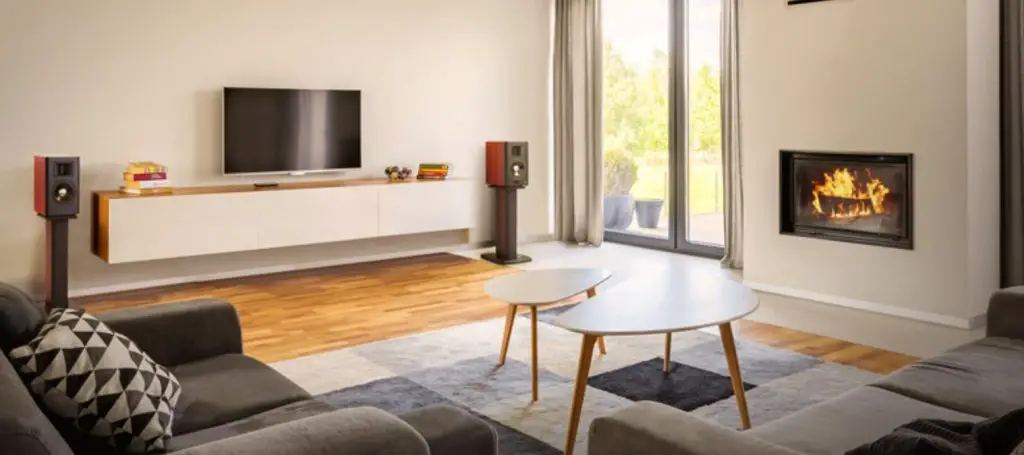
Treble Performance
Compared with A200 and A300, A300Pro’s treble dynamics have been significantly improved. At the same time, it can be felt that the signal-to-noise ratio of the power amplifier is indeed helpful to A300Pro. The treble details are more precise and richer.
The high frequencies of the A200 and A300 seem to be connected to the mid-bass unit. The consistency of sound and the control of the mid-to-high frequencies are inferior to the Edifier Airpulse A300 Pro and even slightly blurred. The A300Pro’s voice lines are exceptionally smooth. From mid to high frequency, silky smooth.
A300 Pro is not only good at performing excellent transient control, but also very accurate and extensive sound field. This kind of all-round improvement is not easy to quantify, but compared with A300 and A200, it is indeed a vast improvement. As a ribbon-style tweeter, the optimization trend of Airpulse A300 Pro tends to be more refined and delicate. What is impressive is the precise transient control of the violin playing, the appropriate sound density, and the rapid speed.
Midrange Performance
The mid-frequency of A300 Pro is also much improved, and the style has also undergone a relatively significant change. The calmness can also be felt where the sound is slight. When you need more volume, there may be more powerful than you expect. In the A200 and A300 periods, the intermediate frequency is somewhat fuzzy, and the control is not enough.
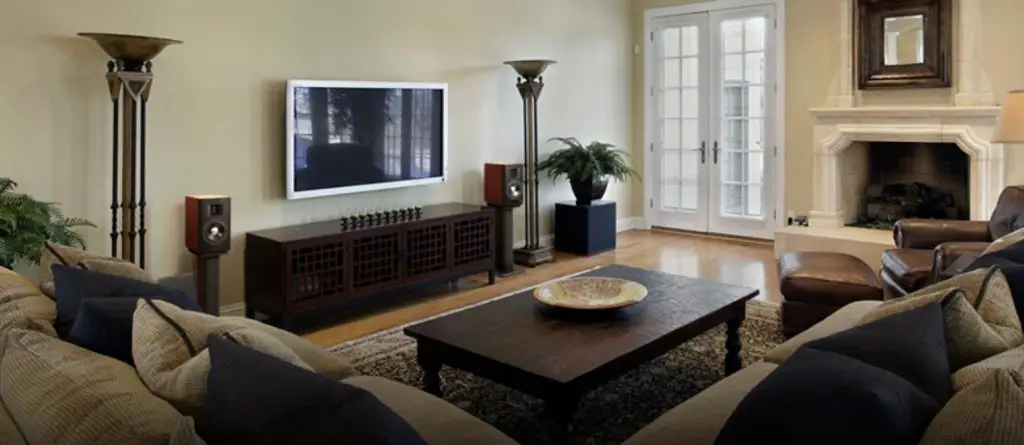
In terms of the human voice, A300 Pro makes the details of the sound in the mid-frequencies better, mainly due to the transient and fine details’ speed. The transient details are rich and do not procrastinate.
For great dynamic symphonies, the A300 Pro has plenty of power. The dynamic performance is very robust, and this robustness contains enough detail and level. Under very extreme loud sound pressure, even when dealing with a large room of 40-50 square meters, it shows reasonable control. That is difficult to do on the previous A200 and A300.
Bass performance
The low frequency of the A300Pro is relatively sensitive to the quality and style of the sound source. The resolution of the low frequency still has a significant advantage over the previous one. A300 Pro’s metal diaphragm speaker, up to a minimum of 40Hz. In actual listening, you can feel the shock. The A300Pro only performs at 120 watts of bass. For traditional active speakers to reach this level, 2-3 times the power may not be enough. In the middle and low-frequency parts, such as cello performance, A300Pro has fewer modifications than the previous AIRPULSE, with an exquisite and crisp sound, excellent stability, and outstanding resolution.
Sound Performance Summary
Compared with the previous AIRPULSE products, the sound performance of A300Pro is an all-round improvement. With ample power, a pair of 6.5-inch large-size woofers often brings not only the delicacy under stability but also the more gratifying ability to expand and release freely. With the A300Pro on the left and right independent channels, the sound density, especially the mid and high-frequency density, has improved significantly. The accuracy of sound control is much improved, and the low-frequency and mid-frequency transient performance are more delicate and precise.
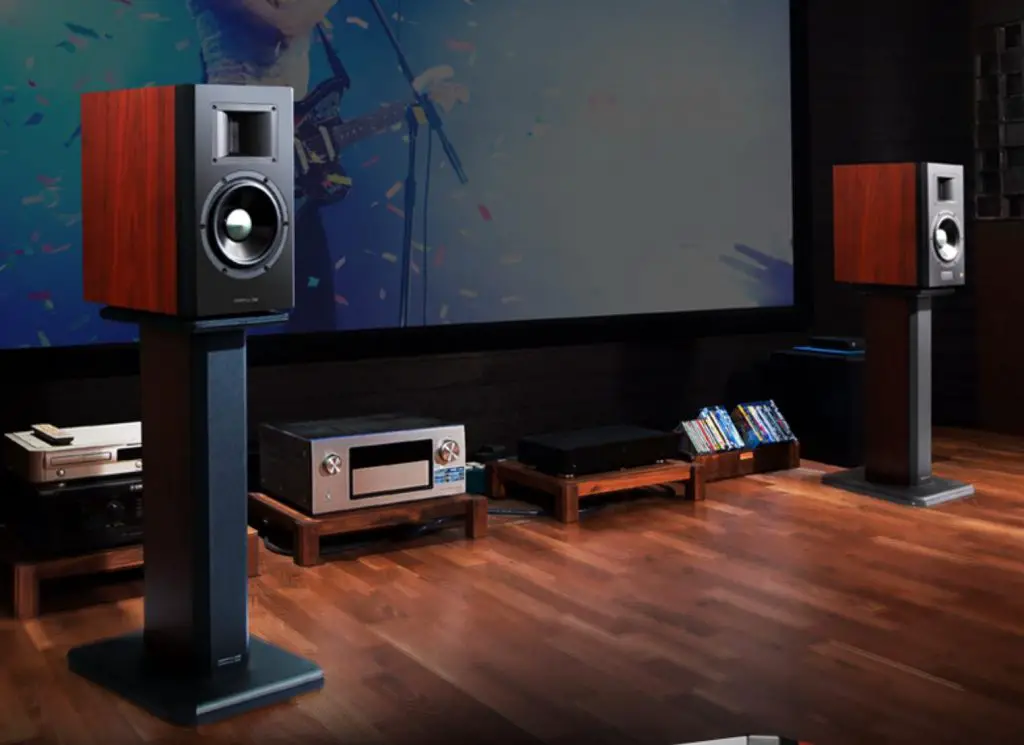
Performance in Different Modes
The above performance is based on the A300Pro’s left and right independent channel mode. Let’s talk about the performance in the KleerNet wireless connection mode. With the same analog input and the same audio source, the dynamics of the mid and high frequencies in the A300Pro KleerNet wireless mode will be reduced. But even in this mode, the overall quality of A300Pro is still higher than that of A200 and A300.
The Bluetooth performance is stable. While convenient, the A300Pro Bluetooth can also show the Bluetooth speakers’ high sound quality, and there are no shortcomings.
Conclusion
AIRPULSE A300Pro’s sound quality has improved significantly, and it can adequately perform in the left and right independent channel mode. Various input modes, the remote control can be used as an additional gift function. Compared with A200 and A300, the sound of A300Pro has improved all aspects. Abundant power support and a more refined tuning style make its overall performance different from Edifier’s early products. The music is smooth, the transient control is accurate, and the appropriate speed makes A300Pro significantly higher than A200, A300 by more than one grade. They are not on the same level.
Edifier Airpulse A300 Pro Specs
- Power: L/R (treble): 10W + 10W, L/R (mid-bass): 120W + 120W
- Signal to noise ratio DB: L/R ≥ 90dB(A)
- Input sensitivity: balanced input: 1100±50mV, unbalanced input: 700±50mV, AUX input 700±50mV, Bluetooth input 500±50mFFs, optical input 500±50mFFs, coaxial input 500±50mFFs, USB input 550±50mFFs
- Frequency response range: 40Hz-20KHz
- Input interface: wireless mode: AUX, USB, optical fiber, coaxial, Bluetooth
- Professional mode: balanced input (XLR), unbalanced input (RCA)
- Single box size: (width x height x depth) 225 x 385 x 350mm
- Net weight (pair): 24kg
